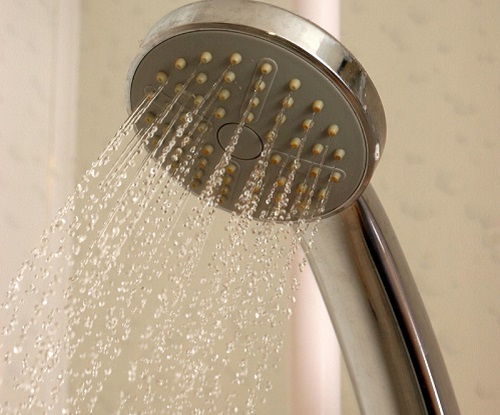Starting or ending your day with a hot, steamy shower is probably more enjoyable and relaxing than a cold shower. But what if the latter could help you lose weight? It’s believed that cold exposure stimulates thermogenesis – a process where the body releases heat to keep itself warm and burns more calories. But while cold showers may briefly increase your metabolism, the effect is negligible regarding actual weight loss. So, how many calories does a cold shower burn?
This article covers everything you need to know about cold showers and calorie burning. For instance, how many calories does a cold shower burn? Why cold exposure may not be the best approach for weight loss, what’s a safer fat-burning alternative, and so on.
Do Cold Showers Burn Fat?
Cold showers can feel pretty uncomfortable, especially if you’re not used to them, but they do offer a lot of benefits, including:
- Wakes you up
- Calms itchiness
- Increases circulation
- Relieves sore muscles after a workout
- Reduces stress
- Encourages healthier and glowing hair and skin, etc
Several articles also claim that cold showers help with weight loss. But this concept isn’t new; it’s been studied for several decades, resulting in different findings.
A British Journal of Sports Medicine study described how a few minutes of cold water emersion can help boost metabolism.
In another study, researchers found that shivering causes hormonal changes that activate the production of brown fat. This type of fat generates heat by burning calories to help maintain body temperature.
How Cold Showers Burn Fat
The science behind cold showers burning calories has much to do with brown adipose tissue (BAT), also known as brown fat. BAT becomes active under cold stress, and its primary function is to burn calories to generate heat, thus maintaining body temperature. So, as your body temperature dips due to taking a cold shower, it activates brown fat to produce heat. Eventually, you’ll start to shiver, which is also an attempt to generate heat by burning calories.
A lot of brown fat cells are found on the back, neck, and shoulders. So the next time you shower, let the cold water beat down these parts.
From the text above, it sounds like cold showers are a miracle for those trying to lose weight. But is it a reliable method for losing weight? Not really!
In several studies, participants spend several hours in a cold room. While this can increase metabolism and the number of calories burned, you can’t achieve the same results stepping under a chilly shower for a few minutes. Also, the sample sizes are small to give reliable results.
Secondly, the effect of cold shower exposure is relatively small and varies from person to person. There’s a debate about the extent to which BAT is present in different individuals. That’s because our body’s reserves of brown fat deplete as we age, and BAT is more common in lean people than in those who are overweight or obese. This makes it unclear how much an individual’s metabolism rate will be affected. Lean people may require increased metabolism to maintain body temperature, while fat stores in overweight or obese individuals act as a layer of insulation to keep them warm.
It’s important to note that these studies are unclear about how cold you actually need to get and how long the exposure should last.
How Much Fat Do Cold Showers Burn?
We’ve already seen that cold exposure can trigger calorie burning, but how much of a difference are we talking about?
The amount of calories burned during a cold shower will depend on the water temperatures and the length of exposure, among other things.
Cold exposure is said to increase the metabolic rate by about 1-2 calories per minute. Most people spend about 5-8 minutes in the shower, which translates to burning 10-40 extra calories. It goes without saying that this is not a significant amount of calories, and you won’t produce legitimate weight loss results by taking cold showers only.
The more your body has to work to keep warm, the more calories you burn. This means showering with colder water for longer periods will yield greater results. The problem with this is not everyone can handle the same level of cold exposure, depending on one’s age, health, genetics, etc. You also don’t want to force yourself to stay in cold water for too long, as there’s a risk of getting hypothermia.
Is a Cold Shower Good for Losing Weight?
Cold showers can help burn fat, but you’d have to stay under very cold water for long periods to burn a significant amount. No one can or should spend more than a few minutes in an icy cold shower. Not only is it an uncomfortable and horrible experience, but it’s also bad for your health.
Taking long cold showers could make your body temperature dip to dangerously low levels, thus putting you at risk of frostbite and damage to your extremities. Hypothermia can also happen in just a few minutes of exposure to icy water. Symptoms include fatigue, muscle weakness, and slowing down of reflexes. If left untreated, hypothermia can lead to complete heart and respiratory system failure and even death.
Cold exposure can temporarily increase heart rate and blood pressure, which makes it dangerous for people with heart disease. The sudden shock could trigger a heart attack or heart rhythm irregularities.
Cold exposure for weight loss can also have a counter-effect by increasing your appetite. Studies have shown that being cold increases leptin and ghrelin levels, thus making you hungrier. So you may burn off a few calories by exposing yourself to cold temperatures only to replace them with more food intake.
Lastly, cold showers can be uncomfortable and even painful for some, especially for individuals with certain illnesses and sensitivities. The discomfort of cold showers can cause stress, which in turn, causes an increase in cortisol levels and a decrease in fat burning.
Hot vs. Cold Showers – Which Is Better for Weight Loss?
The truth is your body burn calories doing all sorts of things, including when you sleep. Even a warm shower can burn extra calories, but it’s likely not enough to lead to measurable weight loss.
That being said, hot showers are more relaxing while cold showers cause your body to work extra hard to generate heat to keep warm. In that case, taking a cold shower would be more beneficial if your goal is to burn more calories.
What Are Safer and More Effective Fat-Burning Alternatives?
Fat burning is an elusive goal for many people, leading to the emergence of many diets, products, and treatments that promise quick and easy fat loss. But cold showers are not a magic solution for weight loss either.
The first step to losing weight is watching what you eat. Nutritionists suggest cutting back on processed foods and refined sugars. Instead, you may want to fill your plate with whole foods, vegetables, lean meat, and plant-based oils. Be sure to practice portion control and strive for a calorie deficit.
Regular physical activity, whether walking, jogging, running, yoga, aerobics, or HIIT exercises, can also help you burn fat and lose weight. What’s important is consistency.
Final Thoughts On, “How Many Calories Does a Cold Shower Burn?”
Many believe that the shock of cold water can boost your metabolism, which leads to burning more calories. But the reality is a bit more complicated. While cold exposure briefly increases your metabolism, the effect is negligible regarding actual fat-burning and weight loss. Additionally, cold showers are uncomfortable and could increase the risk of certain health conditions.
While cold showers may not be the solution for weight loss, they offer several benefits for overall health, making them worth including in your routine.



